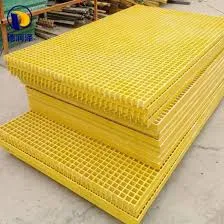
-
 Afrikaans
Afrikaans -
 Albanian
Albanian -
 Amharic
Amharic -
 Arabic
Arabic -
 Armenian
Armenian -
 Azerbaijani
Azerbaijani -
 Basque
Basque -
 Belarusian
Belarusian -
 Bengali
Bengali -
 Bosnian
Bosnian -
 Bulgarian
Bulgarian -
 Catalan
Catalan -
 Cebuano
Cebuano -
 China
China -
 China (Taiwan)
China (Taiwan) -
 Corsican
Corsican -
 Croatian
Croatian -
 Czech
Czech -
 Danish
Danish -
 Dutch
Dutch -
 English
English -
 Esperanto
Esperanto -
 Estonian
Estonian -
 Finnish
Finnish -
 French
French -
 Frisian
Frisian -
 Galician
Galician -
 Georgian
Georgian -
 German
German -
 Greek
Greek -
 Gujarati
Gujarati -
 Haitian Creole
Haitian Creole -
 hausa
hausa -
 hawaiian
hawaiian -
 Hebrew
Hebrew -
 Hindi
Hindi -
 Miao
Miao -
 Hungarian
Hungarian -
 Icelandic
Icelandic -
 igbo
igbo -
 Indonesian
Indonesian -
 irish
irish -
 Italian
Italian -
 Japanese
Japanese -
 Javanese
Javanese -
 Kannada
Kannada -
 kazakh
kazakh -
 Khmer
Khmer -
 Rwandese
Rwandese -
 Korean
Korean -
 Kurdish
Kurdish -
 Kyrgyz
Kyrgyz -
 Lao
Lao -
 Latin
Latin -
 Latvian
Latvian -
 Lithuanian
Lithuanian -
 Luxembourgish
Luxembourgish -
 Macedonian
Macedonian -
 Malgashi
Malgashi -
 Malay
Malay -
 Malayalam
Malayalam -
 Maltese
Maltese -
 Maori
Maori -
 Marathi
Marathi -
 Mongolian
Mongolian -
 Myanmar
Myanmar -
 Nepali
Nepali -
 Norwegian
Norwegian -
 Norwegian
Norwegian -
 Occitan
Occitan -
 Pashto
Pashto -
 Persian
Persian -
 Polish
Polish -
 Portuguese
Portuguese -
 Punjabi
Punjabi -
 Romanian
Romanian -
 Russian
Russian -
 Samoan
Samoan -
 Scottish Gaelic
Scottish Gaelic -
 Serbian
Serbian -
 Sesotho
Sesotho -
 Shona
Shona -
 Sindhi
Sindhi -
 Sinhala
Sinhala -
 Slovak
Slovak -
 Slovenian
Slovenian -
 Somali
Somali -
 Spanish
Spanish -
 Sundanese
Sundanese -
 Swahili
Swahili -
 Swedish
Swedish -
 Tagalog
Tagalog -
 Tajik
Tajik -
 Tamil
Tamil -
 Tatar
Tatar -
 Telugu
Telugu -
 Thai
Thai -
 Turkish
Turkish -
 Turkmen
Turkmen -
 Ukrainian
Ukrainian -
 Urdu
Urdu -
 Uighur
Uighur -
 Uzbek
Uzbek -
 Vietnamese
Vietnamese -
 Welsh
Welsh -
 Bantu
Bantu -
 Yiddish
Yiddish -
 Yoruba
Yoruba -
 Zulu
Zulu
Types of Vessels and Tanks for Various Industrial Applications
Vessels and Tanks An Overview of Their Importance and Applications
Vessels and tanks are critical components in various industries, serving vital roles in storage, transportation, and processing of fluids and gases. These structures come in a myriad of shapes and sizes, tailored to meet the specific requirements of different applications, from the chemical and petrochemical industries to food and beverage production and water treatment facilities.
What Are Vessels and Tanks?
In general terms, a vessel refers to any container designed to hold liquids, gases, or solids, while a tank is typically regarded as a larger, stationary storage unit specifically built to store liquids or gases. Vessels can be pressurized or non-pressurized and may be used for storage, mixing, or reaction processes. Common types of vessels include pressure vessels, storage tanks, and process tanks.
Types of Vessels and Tanks
1. Pressure Vessels These are designed to operate at pressures significantly different from the ambient pressure. They are commonly used in the petrochemical and power generation industries to contain gases or liquids under pressure. Examples include boilers, reactors, and gas cylinders.
2. Storage Tanks These are primarily utilized for storing large quantities of liquids or gases. Storage tanks can be above-ground or underground and are often equipped with safety features to prevent leaks and spills. They are commonly used in the oil and gas, water treatment, and food and beverage sectors.
3. Process Tanks Often used in manufacturing processes, these tanks provide a controlled environment for mixing, heating, or cooling substances. They are typically designed to facilitate specific chemical reactions or to hold materials temporarily during processing.
vessels and tanks

Importance in Industries
The design and functionality of vessels and tanks play a crucial role in ensuring operational safety and efficiency. For example, in the petrochemical industry, the safe storage of volatile substances is paramount. Properly designed pressure vessels can withstand high pressures and temperatures, minimizing the risk of catastrophic failures. Similarly, in the food and beverage industry, tanks must not only be robust but also constructed from materials that comply with health and safety regulations.
Moreover, in the water treatment sector, storage tanks are essential for holding large volumes of treated water before distribution. The reliability and durability of these structures directly influence the effectiveness of water treatment processes, ensuring that clean water is consistently available for public consumption.
Regulations and Standards
Given their critical functions, vessels and tanks are subjected to strict regulations and standards to ensure safety and environmental protection. In many countries, organizations such as the American Society of Mechanical Engineers (ASME) set guidelines for the design, inspection, and maintenance of pressure vessels, while environmental agencies regulate the construction and operation of storage tanks to prevent leaks and spills.
Innovations and Future Trends
As industries evolve, so too do the technologies associated with vessels and tanks. Innovations such as smart sensors, real-time monitoring systems, and advanced materials are being integrated to enhance the safety and efficiency of these structures. For instance, IoT (Internet of Things) technology allows for remote monitoring of tank levels, pressures, and temperatures, enabling proactive maintenance and emergency response.
In conclusion, vessels and tanks are indispensable in numerous industries, underpinning processes that are vital to modern society. As technology progresses and environmental considerations grow more stringent, the design and operation of these structures will continue to evolve, ensuring they meet the demands of the future while maintaining safety and efficiency. Understanding the significance of vessels and tanks not only highlights their practical applications but also underscores the need for ongoing innovation in this critical field.









